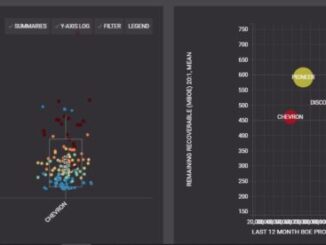
Inflation is like so not defeated? Jacking up prices faster than costs are rising creates stunning profits. Strong demand sees to it that companies can do it.
By Wolf Richter for WOLF STREET.
Overall corporate pre-tax profits (excluding the Federal Reserve Banks), jumped by 3.4% in Q3 from Q2, and by 5.5% year-over-year, to a record seasonally adjusted annual rate of $3.45 trillion, fueled by profit spikes in a number of industries whose figures the Bureau of Economic Analysis released today, and we’ll get to them in a moment.
The BEA’s measure of “corporate profits” broadly track profits from current production by all businesses that have to file corporate tax returns, including LLCs and S corporations, plus some organizations that do not file corporate tax returns. It’s based on income tax data from the IRS and on financial statement data filed with the SEC.
During the surge of inflation in 2021 and 2022, price increases were outstripping cost increases by extraordinary margins, hence the spike in profits. Then there was a lull in Q1 and Q2 this year, and now it’s starting all over again:
The inflation aspects.
Surging profitability during a period of big inflation is a sign that companies have leveraged inflation to their advantage, hiking prices much faster than their costs went up, and thereby doing their part in fueling inflationary momentum. And they’re able to do it because their customers are willing to pay those whatever-prices.
Interestingly, the surging labor costs have so far not made a dent into these profit spikes, and they might not if companies can continue to jack up their prices faster than their costs go up, including labor costs, which is precisely how inflation is nurtured and propagated.
First some definitions.
IVA: The “inventory valuation adjustment” removes “profits” derived from inventory cost changes. Profits from inventory are more like a capital-gain than profits from current production.
CCAdj: The “capital consumption adjustment” converts the tax-return measures of depreciation (based on historical-cost accounting) to measures of consumption of fixed capital, based on current cost with consistent service lives and with empirically based depreciation schedules.
Capital gains & dividends received are excluded to show business profits from current production, rather than financial gains.
Profits by industry.
Profits by financial domestic Industries rose by 2.0% in Q3 from Q2, to a seasonally adjusted annual rate of $710 billion, the second highest behind the record in Q1, and was up by 23% year-over-year.
These are domestic profits by all financial companies except the Federal Reserve Banks (FRBs): banks and bank holding companies, other credit intermediation and related activities; securities, commodity contracts, and other financial investments and related activities; insurance carriers and related activities; and funds, trusts, and other financial vehicles.
Their customers are paying for those profits by paying higher prices, fees, insurance premiums, etc., which contribute to the still hot inflation in services.
Profits in durable-goods manufacturing spiked by 7.8% in Q3 from Q2, and by 18.5% year-over-year to a record seasonally adjusted annual rate of $400 billion. This amounts to a 100% spike in profits from just before the pandemic.
These industries produce computers, electronics, motor vehicles, trailers, machinery, fabricated metals, electrical equipment, appliances, components, and other durable goods.
Profits in nondurable-goods manufacturing rose by 1.1% in Q3 from Q2, to a seasonally adjusted annual rate of $344 billion, after having dropped in the prior two quarters. Compared to a year ago, profits were down by 10%.
These industries produce food, beverages, and tobacco products; petroleum products (including gasoline and diesel), coal products; chemical products; and other nondurable goods.
Profits in the retail trade, incl. Ecommerce, spiked by 5.9% in Q3 from Q2 and by 30.6% year over year, to a seasonally adjusted annual rate of $374 billion.
Inflation is a wonderful profit-generator when demand is so strong and customers so befuddled with the inflationary mindset that companies can raise their prices much faster than their costs go up.
And our drunken sailors, as we have called them facetiously and lovingly all year, are eagerly playing along, splurging and dropping money left and right, armed with per-capita disposable incomes that have outpaced inflation by a wide margin this year:
Profits in wholesale trade rose by 2.3% in Q3 from Q2, to a seasonally adjusted annual rate of $233 billion, the first increase after three quarters of declines. Compared to a year ago, profits were down by 13%:
Profits in information spiked by 3.0% in Q3 from Q2, and by 15.7% year-over-year, to a record seasonally adjusted annual rate of $193 billion. The layoffs in this industry in 2022 and early 2023 likely helped bring costs down and boost profits.
Information is a relatively small sector with only about 3 million employees, so compared to its small size, it’s hugely profitable. It includes web search portals, data processing, data transmission, information services, software publishing, motion picture and sound recording, broadcasting including over the Internet, and telecommunications. Some of the tech and social media companies are in this sector.
Profits in transportation & warehousing plunged by 8.1% in Q3 from the record in Q2, to a seasonally adjusted annual rate of $117 billion. Year-over-year, profits were up by 3.6%.
Profits in the huge category of “other nonfinancial” industries jumped by 4.8% in Q3 from Q2, to a seasonally adjusted annual rate of $845 billion. Year-over-year, profits were up by 1.0%. But they’re still below the record of Q2 2022.
Includes mining; construction; real estate and rental and leasing; professional, scientific, and technical services (where some of the tech and social media companies are); administrative and waste management services; educational services; health care and social assistance; arts, entertainment, and recreation; accommodation and food services; agriculture, forestry, fishing, and hunting; and other services, except government.
This category is responsible for inflation in healthcare, concert tickets and other entertainment, lodging, eating out, construction, etc. And after the lull, it’s starting all over again:
Enjoy reading WOLF STREET and want to support it? You can donate. I appreciate it immensely. Click on the beer and iced-tea mug to find out how:
Would you like to be notified via email when WOLF STREET publishes a new article? Sign up here.



